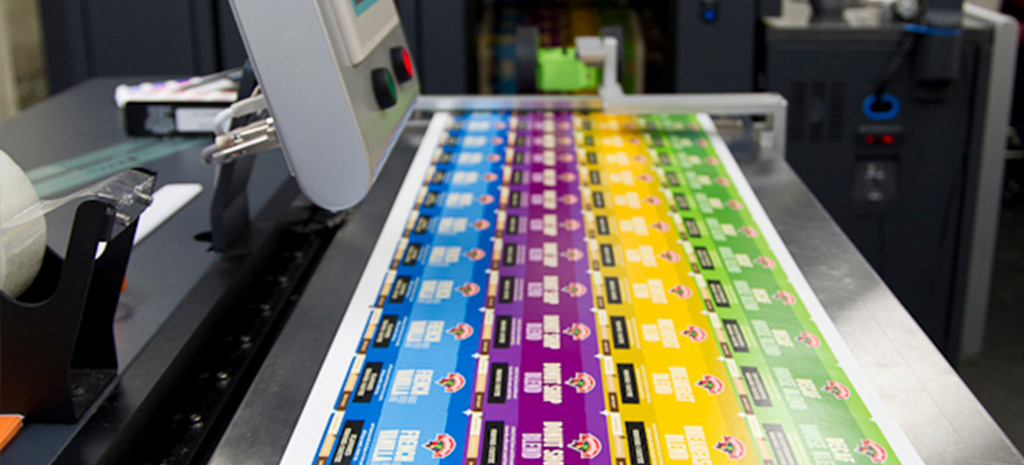In the dynamic realm of printing, bar marking in flexo holds a pivotal role. Being a vital part of the flexographic printing process, it ensures accuracy and precision, vital for maintaining high print quality. For those involved in marketing and printing, understanding bar marking is crucial for achieving desired print outcomes.
Flexographic printing, often referred to simply as ‘flexo’, is a versatile and popular printing method. The use of bar marking in flexo aids in aligning and registering images during production, ensuring each element on a page is placed correctly, from the first to the last print. To delve deeper into this topic, lets explore the nuances and significance of bar marking within this method.

What is Bar Marking?
Bar marking in flexographic printing refers to coded marks at the edges of substrates. These marks ensure that the printed image is precisely aligned and properly registered throughout the print run. Printers rely on these marks for maintaining color consistency and for adjusting the print settings when needed.
The Role of Bar Marking in Quality Control
Bar markings act as a guide to ensure every printed copy mirrors the original design. They are critical for achieving precise color registration and maintaining consistent print quality, which is pivotal in product packaging and branding.
The Importance of Color Registration
Proper color registration means each color is printed in its designated space without overlapping other colors unless intended. Bar marking in flexo allows for precise color lining, minimizing errors that could lead to wasted materials and time.
Impact on Waste Reduction
By minimizing misalignments and print defects, bar markings significantly reduce waste, both in terms of materials and time. Efficient operations save costs and are environmentally friendly.
Components of Bar Marking Systems
Bar marking systems consist of optical sensors and visual markers. These components work in unison to detect discrepancies in the printing process and adjust them in real-time.
Optical Sensors
Optical sensors read the bar marks to monitor the position and alignment of the printed material. Adjustments are made by the press in response to any deviations detected by these sensors.
Visual Markers
These are the visible cues on the substrate that the sensors detect. They are strategically placed and designed to be recognized easily by the system in the fast-paced printing environment.
Applications of Bar Marking Beyond Flexography
While bar marking is essential in flexography, its principles and benefits extend to other printing methods, such as offset or digital printing, showcasing its versatility and adaptability.
Bar Marking in Offset Printing
In offset printing, bar marking helps maintain image fidelity over long print runs, similar to its role in flexography but adapted to the specifics of offset technology.
Bar Marking in Digital Printing
In digital printing, bar marking supports data integrity and template precision, ensuring accurate output for personalized and high-quality prints.
Training and Skills Required
Handling bar marking systems demands specific skills and training. Operators must understand how to interpret the data provided by the bar marking system and adjust the machinery accordingly.
Challenges in Bar Marking Systems
While beneficial, bar marking systems can be complex and require careful management. Technical issues or sensor misalignments can lead to significant losses if not managed properly.
Troubleshooting Common Issues
Precision in bar marking is crucial. Misreading or incorrect alignment needs to be quickly addressed to avoid quality issues in print runs.
Future Innovations in Bar Marking
The future of bar marking is poised for technological advancements, including AI and machine learning, which are expected to further enhance accuracy and efficiency in flexographic printing.
Role of AI in Future Strategies
Artificial Intelligence could revolutionize bar marking by offering predictive maintenance and real-time adjustments, taking precision and efficiency to new heights.
To learn more about such advancements, consider reviewing this glossary of flexography which provides insights into upcoming trends.
Conclusion
Understanding the mechanics and benefits of bar marking in flexo presents a clear advantage for anyone involved in printing and packaging. As technology advances, staying informed will help professionals adapt to and capitalize on these innovations. To further understand the complexities of flexographic printing, visit resources discussing how flexographic printing works and integrate those insights with innovative bar marking practices.

FAQs
Q1: How does bar marking improve print quality?
A: Bar marking ensures proper alignment and color registration, essential for high-quality prints, thereby reducing misalignments and defects.
Q2: Can bar marking systems be used in other printing methods?
A: Yes, many printing methods, such as offset and digital, utilize bar marking principles for impressive accuracy and quality.
Q3: What future innovations are expected in bar marking?
A: AI and machine learning are anticipated to enhance precision and efficiency, allowing real-time adjustments and predictive maintenance in bar marking systems.






